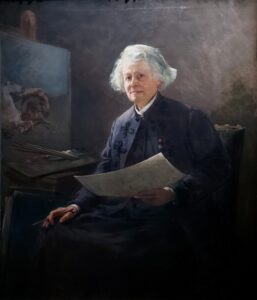
Marie-Rosalie Bonheur was born in Bordeaux on 16 March 1822. She was a French artist, well known as a painter of animals in realist style. She lived with her first partner, Nathalie Micas, for over 40 years until Micas’ death. Later she had a relationship with the American painter Anna Elizabeth Klumpke.
Life & work
She was the oldest child in a family of artists. Her father was Oscar-Raymond Bonheur, a landscape and portrait painter; her mother was Sophie Bonheur (née Marquis), a piano teacher who died when Rosa was eleven. This must have been a traumatising experience for her.
The family moved to Paris in 1825. Rosa had a difficult time learning to read, though she would sketch for hours at a time with pencil and paper. At school she was a disruptive child and she was expelled a few times. She left school at 13 and started to work at her father’s studio. He allowed her to pursue her interest in painting animals by bringing live animals to the studio for studying.
At 14 she started to copy old masters at the Louvre and her main interest would always be animals. She studied domesticated animals, including horses, sheep, cows, goats and rabbits. She even went to the abbatoirs of Paris in order to dissect animals and study their anatomy.
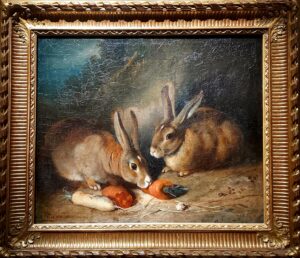
At the age of 18, in 1840, she made her first entry into The Salon with her painting Two rabbits, which was received well.
Two rabbits
oil on canvas
signed lower left, 1840
54 x 65 cm
Musée des Beaux-Arts, Bordeaux.
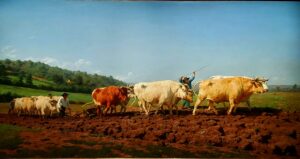
Bonheur’s first great success, Ploughing in the Nivernais, was thanks to a French government commission. The painting was exhibited at the Salon in 1849 – it can now be seen in the Musée d’Orsay in Paris.
Her most famous work, the monumental The Horse Fair, was completed in 1855 and measured eight by sixteen feet (2.4 by 4.9 m). It depicts the horse market held in Paris, on the tree-lined boulevard de l’Hôpital, near the Pitié-Salpêtrière Hospital, which is visible in the painting’s background.
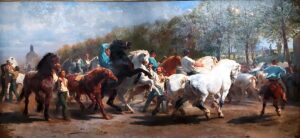
There is a reduced version in the National Gallery in London. These two works led to international fame and recognition, not only in Europe but also in the USA.
That same year (1855) she traveled to Scotland and met Queen Victoria, who admired Bonheur’s work. Bonheur loved Scotland; she completed many sketches for later works including Highland Shepherd, completed in 1859.
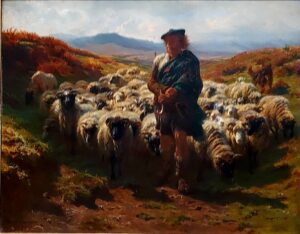
Her ‘Scottish paintings’ (see also below) were very popular in the UK. These pieces depicted a way of life in the Scottish Highlands that had disappeared a century earlier, and they had enormous appeal to Victorian sensibilities.
By the “Decree concerning the cross-dressing of women” which was implemented in France on 17 November 1800, women were not allowed to wear trousers. However Rosa Bonheur was known for wearing men’s clothing. She negotiated special permission from the police. She herself attributed her choice of trousers to their practicality for working with animals and painting en plein air. Having chosen to never never marry or become an appendage to a man in terms of painting, she decided she would be her own boss and that she would lean on herself and her female partners instead. She earned enough money to buy the Château de By in Thomery on the edge of the Fontainebleau forest. She had her partners focus on the home life at the château, while she took on the role of breadwinner by concentrating on her painting. Although she never called herself ‘lesbian’, Bonheur’s legacy must have paved the way for other women who wanted to choose a different life from what society had laid out for them.
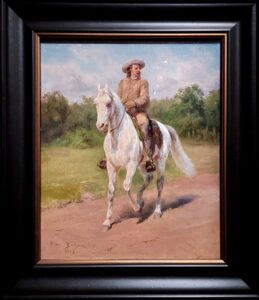
Rosa Bonheur liked to travel, in her own country as well as abroad and she had wanted to visit the USA, but it never happened.
But when Buffalo Bill came to Paris in 1889 with his ‘Wild West Show’, she often visited the location’ and – as usual – made many sketches, in order to finally make a painting.
She never went to Africa either. Yet she lived with lions and she has studied their behaviour together and dedicated many portraits of them. There is a (somewhat idealised) lion family she painted in 1881 and named The Lion at Home (see below).
Animals were her muses. She found a lot of inspiration in the Fontainebleau forest (see more below).
Rosa Bonheur died on 25 May 1899, at the age of 77, at her beloved Château By in Thomery. She was buried together with Nathalie Micas, her lifelong companion, at Père Lachaise Cemetery in Paris. Anna Klumpke was Bonheur’s sole heir after her death, and later joined Micas and Bonheur in the same cemetery upon her death. Many of her paintings, which had not previously been shown publicly, were sold at auction in Paris in 1900.
Expositons & Awards
Rosa Bonheur presented her work on many occasions – too many to mention here – a.o. to the annual Salon in Paris. Her work toured Europe and the USA, firmly establishing her international fame.
She also exhibited her work at the Palace of Fine Arts and The Woman’s Building at the 1893 World’s Columbian Exposition in Chicago, Illinois.
She won many prizes and was decorated with the French Legion of Honour by the Empress Eugénie in 1865, and was promoted to Officer of the order in 1894. Bonheur was the first female artist to be given this award.
Sources
– Ashton D. Rosa Bonheur: A Life and a Legend. Illustrations and Captions by Denise Browne Harethe. New York: A Studio Book/The Viking Press, 1981 NYT Review
– Buratti-Hassan S. et al. 2022. Rosa Bonheur. Catalogue Musée d’Orsay Paris & Musée ds Beaux-Arts Bordeau 2022.
– Hewitt C., Art is a Tyrant: The Unconventional Life of Rosa Bonheur. Icon Books Ltd in 2020, UK
– NMWA.org Collection Profile – Bonheur article and artwork at NMWA.
– Zuralski-Yeager I., Tedesco Frères Selling Rosa Bonheur: An Inquiry into Dealers’ Stock Books. The Getty Research Journal, vol. 16, 2022.
– wikipedia.org
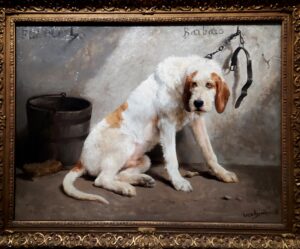
Rosa Bonheur
Barbaro after the hunt
1858
Oil on canvas
96,5 x 130,2 cm
Philadelphia Museum of Art
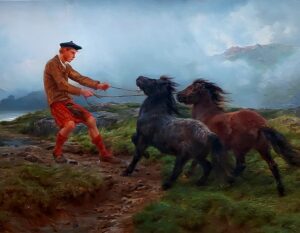
Rosa Bonheur
Poneys Isle of Skye
1861
Oil on canvas
64 x 101,5 cm
Private Collection
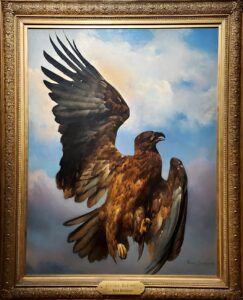
Rosa Bonheur
Wounded Eagle
1870
Oil on canvas
147 x 114 cm
Los Angeles County Museum
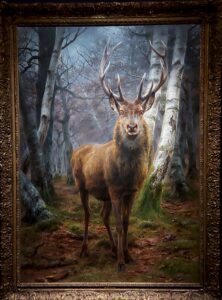
Rosa Bonheur
King of the Forest
1878
Oil on canvas
244,8 x 175 cm
Private Collection
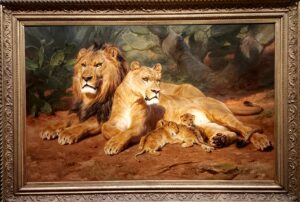 Rosa Bonheur
Rosa Bonheur
Lion at Home
1881
Oil on canvas
162,3 x 262,3 cm
Kinston–upon-Hull Ferens Art Gallery